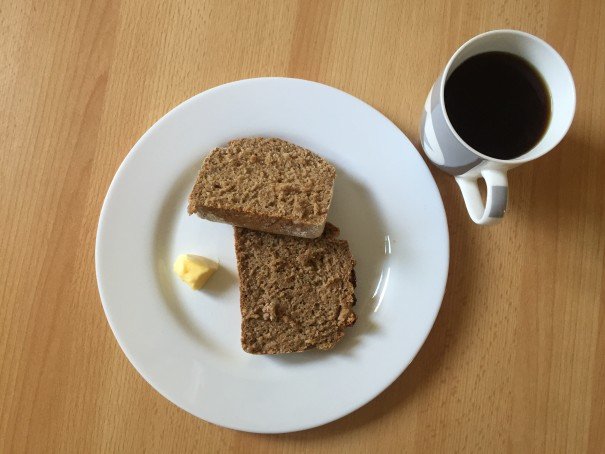
Inhaling the Yeasty Scent of a Dying Art

Inhaling the Yeasty Scent of a Dying Art
Baking bread in Berlin
After weighing a chunk of dough on an ancient scale, Fred Kühnel throws it to me over the kitchen counter of his bakery, dusted with flour. His assistants in checkered long pants and aprons pushed racks of little brötchens in and out of the ovens. The aroma of yeast and baking bread lingers in the kitchen, filling the morning air with the smell of breakfast. “Knead it slowly and shape it, dust it if you need,” he says.
While most of the city is still wriggling under its sheets, I am at a bakery in the Botanischer Garten neighborhood in the south of Berlin, dusting my hands with rye flour over 90s American pop music streaming out of the radio.
Bakeries like Kühnel have almost vanished from the urban landscape in Berlin, where the appreciation for bread is declining and chains are taking over the void left by family bakers who baked for generations. According to Kühnel’s own estimation, there are only approximately around 20 traditional bakers like him left in Berlin. The sourdough starter (sauerteig) at Kühnel’s is over a hundred years old, started when the bakery opened its door to customers in 1895.
As far as breakfasts go, this is as close as I will get to baking bread. My imprecise sense of proportions and heedlessness towards measured steps ensure my failure. Unlike other forms of cooking, bread baking demands a dedication to perfection I sorely lack. My attempts so far have been unsatisfactory at best – brick-like loaves that are heavy and dense without palatable texture.
I knead two chunks, dust them in flour and drop them in the loaf pans lined up for baking. Despite the presence of five other bakeries, most of them chains, in the vicinity, Kühnel’s customer base isn’t collapsing. On Sundays there is usually a queue outside the bakery. “People buy bread from different places these days. They like one particular bread from our bakery and other from another one. It stabilizes the business, not take it away from me,” he says.
Baking is hard, physical labor and interest among the younger generation is diminishing. Kühnel starts at 1.00 in the morning and baking in the kitchen goes on till 10.30 a.m. His bakery produces 15 different types of bread and 25 varieties of brötchen and they are periodically shifted to the display case in his bakery to be sold fresh every day. Left over bread from the previous day is shredded and added to the flour, adding another level of complexity to the bread’s taste.
As soon as my bread is ready, Künhel slips it into a special paper bag lined with butter paper supplied to maintain the freshness of the bread. The bread needs cooling down before it can be sliced. I take the train back, clutching my loaf in my hand, inhaling the ripeness of the yeasty bread and its mocha brown outer crust.
At home, I make coffee and slice the bread before serving myself two slices with a tiny portion of butter. Despite my poor kneading skills, the bread turned out to be more or less shapely, albeit with a broken crust that looks like parched earth. The hundred-year-old sourdough has done its job; each slice sunk into my teeth and each bite revealed the complex taste German bread is so famous for. A fleeting taste of a dying art being kept alive by passionate bakers like Kühnel.